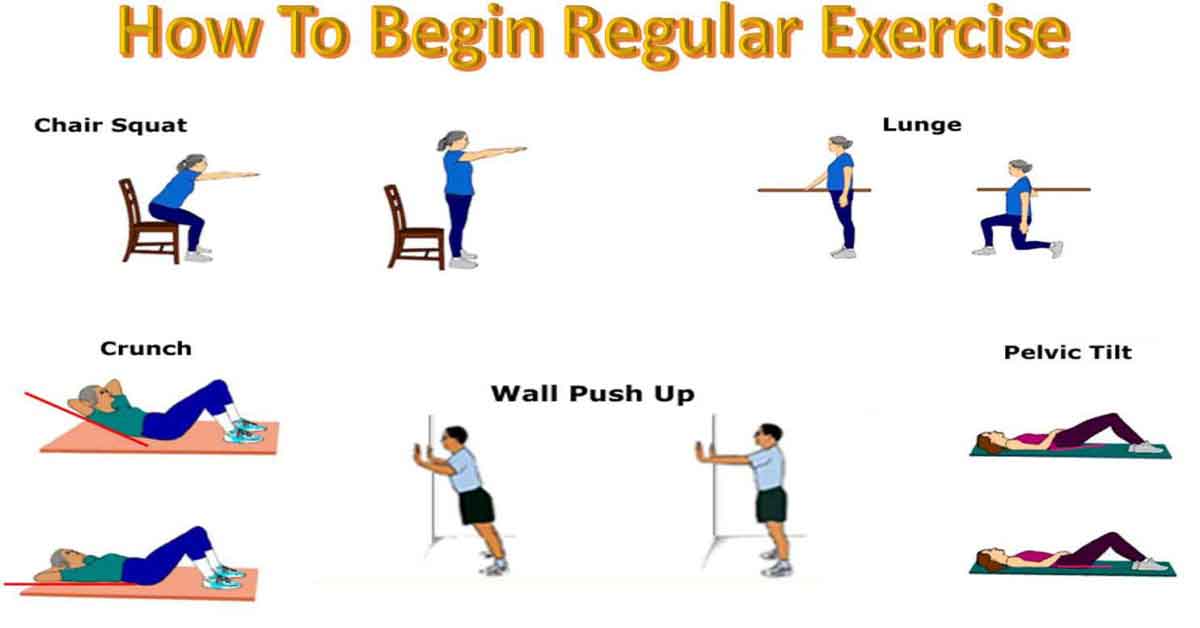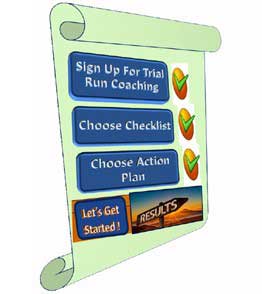Telehealth Reverse Diabetes With Regular Exercise Sessions | Free Trial In Texas

Regular Resistance Exercise maintains muscle mass and increases strength. There’s no better way to increase insulin sensitivity, reverse diabetes and slow the process of aging!
If you’re just a Beginner using Resistance Exercise to Reverse Diabetes, there’s a way described here in this article for you to get started.
Every hour of Regular Resistance Exercise gains 10 hours of Good Health added to your lifetime. That’s a Really Good Deal!
To learn more about the programs Herd Healthcare offers, our website is:
www.herdhealthcare.com
Benefits Of Regular Exercise
Most of all, you look good, perform well and feel great!
Building strong muscles and bones. As you get older muscle decreases mass and gets weaker. Bone density gets less. It’s hard to say that aging is the cause. It’s more likely it’s what happens to Muscle and Bone along the way. Vigorous exercise reverses the changes associated with age. Muscles return to what they were earlier in life and Bone holds its density longer.
Body composition and weight reduction. Caloric restriction lowers metabolic rate and delays weight loss. Regular exercise not only increases metabolic rate, it increases insulin sensitivity. Increasing protein intake and strengthening muscles reduces body fat while maintaining muscle mass.
Brain function and memory. Getting older is associated with declining
Intellectual skills. Effects of overweight, physical inactivity, social laziness and reluctance to learn new skills damage intellectual function. Regular Exercise and Remission of Diabetes not only restores good health it enhances intellectual skills.
Sleep quality. Regular vigorous exercise improves quality and duration of sleep. Good sleep, in turn, increases insulin sensitivity.
Energy levels and fatigue. Mood, anxiety and feelings of fatigue are all improved by regular vigorous exercise. Persistent fatigue, chronic fatigue syndrome and depression are all reduced by regular exercise.
Sexual function.
Regular exercise strengthens the heart, improves blood circulation, tones muscles and enhances flexibility. All of this boosts libido and performance.
Risk of Chronic Disease. High blood levels of insulin, sugar and fat increase the risk of heart disease, stroke, cancer and dementia. Vigorous exercise lowers levels of insulin, sugar and fat in the blood.
Intensity And Duration Of Regular Exercise
 Maximum Exercise Tolerance on treadmill or bicycle ergometer is the traditional way to measure Intensity of Exercise. The amount of work on a treadmill is measured by speed and incline and work on an ergometer is measured by rate and resistance. Volumes of air inspired and exhaled are measured using a face mask and concentrations of oxygen and carbon dioxide are measured using gas detectors in a respirometer.
Maximum Exercise Tolerance on treadmill or bicycle ergometer is the traditional way to measure Intensity of Exercise. The amount of work on a treadmill is measured by speed and incline and work on an ergometer is measured by rate and resistance. Volumes of air inspired and exhaled are measured using a face mask and concentrations of oxygen and carbon dioxide are measured using gas detectors in a respirometer.
Effects of regular exercise on ability to do work is assessed by the maximum amount of oxygen consumed during incremental increases in amounts of work performed.
Peak exercise tolerances measured for cross-country skiers, mountain cyclists and skull rowers are about 100 ml O2/kg body weight per minute. The averages for healthy untrained men and women are about 35 to 40 ml O2 for men and 27 to 31 ml O2 for women.
Heart rates to achieve maximum intensities of exercise are approximately
(220 – age) for men and approximately (205 – age) for women.
Duration of exercise sessions should be at least 20 to 30 minutes.
• Resistance Strength Training at least 15 minutes each muscle group at close to strength limit once every 2 days, 3 days per week.
• Aerobic Endurance Training at least 20 minutes each session at moderate intensity for 150 minutes per week (or strenuous intensity for 75 minutes each week).
Working at moderate to strenuous effort maintains the afterburn effect for as long as 48 hours. Even more important, skeletal muscle stores sugar and fatty acids in glycogen and fat molecules to supply energy for muscle contraction.
Building skeletal muscle requires energy. Mechanical work of strength training uses energy. Most important of all, refilling glycogen and fat stores clears sugar and fat from the circulation during rest.
Regular Exercise Sessions
 Endurance Aerobic Sessions:
Endurance Aerobic Sessions:
Aerobic exercise involves activities that increase your breathing and heart rate such as walking, jogging, swimming, and biking. It involves intensity below maximal contraction strength with ample supply of oxygen.
Start an endurance aerobic exercise program with exercise sessions you can do easily. Aim for a heart rate about 10 beats per minute less than what was recorded during a 6-minute Walking Tolerance Test. Initial sessions should include a 5 minute warm-up at an even lower heart rate, 5 minutes at the highest heart rate followed by 5 minutes at a lower intensity to cool down.
Wherever you are exercising, the air temperature should be 50° F to 80° F.
Effort and time should be increased gradually. To prevent soreness or injury, total intensity and duration of exercise sessions each week should not be increased more than about 10%.
Intensity and duration should be recorded as heart rate before, time during maximum effort and heart rate immediately after maximum effort. If you do not have a heart rate counter, find the artery on the thumb side of your wrist and count the number of pulses you can feel for 15 seconds. Multiply that number times 4 to calculate the pulse rate in one minute.
Resistance Strength Sessions:

Exercise to increase strength and build muscle is designed to bring force of contraction to its limit and beyond. Between sessions, muscle cells regenerate and build new fibers to grow stronger. This takes time and groups of muscles should be allowed to rest and recover 48 hours between sessions.
Start a resistance strength training program with exercises you can do easily. Aim for 3 sets of 5 to 10 repetitions in about 15 minutes. Rest for a minute or two between each set.
Each session should be 30 or 45 minutes in duration on 3 days each week. Intensity should tire the muscles you are exercising to about the limit of what they can do.
Record times you begin and finish each exercise that lasts about 15 minutes. Record the total number of repetitions during each exercise
Measure and record your heart rate before and after each exercise that you do for about 15 minutes.
•Squat Exercise:
Beginners Sit/Stand Exercise.
 Use a chair with a flat solid seat at a height from the floor you can sit on with your thighs parallel to the floor. Plant your feet on the floor about shoulder-width apart. Keep your back straight, hold your arms straight at an angle in front of you and look straight ahead. Stand and sit and repeatedly for 5 to 10 repetitions.
Use a chair with a flat solid seat at a height from the floor you can sit on with your thighs parallel to the floor. Plant your feet on the floor about shoulder-width apart. Keep your back straight, hold your arms straight at an angle in front of you and look straight ahead. Stand and sit and repeatedly for 5 to 10 repetitions.
Intermediate Body Weight Exercise. Stand in front of the chair, facing away from it, with your feet shoulder-wide apart. Squat down until your rear end just slightly touches the chair without supporting your weight. Then stand straight up again. Your knees should be bent at about a right angle.
Advanced Full Body Weight Exercise. Stand entirely free from any support. Squat down until your rear end is below parallel with your knees.
Weight Added to Squat Exercise. Hold weight with arms crossed on chest or put weight in a backpack. Add no more than 10 lb with each increase in load for exercise sessions.
•Push-Up Exercise:
Beginner Wall Push-up Exercise.
 Stand away from the wall a little more than the length of your arms. Plant your feet on the floor about shoulder-width apart. Hold your arms straight ahead with the palms of your hands on the wall and look straight ahead. Bend your arms with your elbows down until your nose almost touches the wall. Push away and then bend forward repeatedly for 5 to 10 repetitions.
Stand away from the wall a little more than the length of your arms. Plant your feet on the floor about shoulder-width apart. Hold your arms straight ahead with the palms of your hands on the wall and look straight ahead. Bend your arms with your elbows down until your nose almost touches the wall. Push away and then bend forward repeatedly for 5 to 10 repetitions.
Intermediate Bench Push-up Exercise. Kneel in front of a bench or chair with knees slightly apart. Place your hands shoulder-width apart on the front edge of the bench or chair with your elbows down. Keep your body straight from shoulders to knees. Bend your body forward until your elbows are bent at about a right angle. Straighten your arms and raise your body until your elbows are almost straight and repeat for 5 to 10 repetitions.
Intermediate Knee Push-up Exercise. Lie face-down on a mat or the floor. Place your hands wider than shoulder-width apart, knees slightly apart and keep your body straight from shoulders to knees. Straighten your arms and raise your body until your arms are almost straight. Then lower your body until your elbows are bent at about a right angle and repeat for 5 to 10 repetitions.
Full Push-up Exercise. Lie face-down on a mat or the floor. Place your hands wider than shoulder-width apart, feet and toes slightly apart and keep your body straight from shoulders to knees. Straighten your arms and raise your body until your arms are almost straight. Then lower your body until your elbows are bent at about a right angle. and repeat for 5 to 10 repetitions.
Weight Added to Push-up Exercise. Put weight in a backpack. Add no more than 10 lb with each increase in load for exercise sessions.
•Crunch Exercise.
Lie on your back on a mat or the floor.
 Place your hands behind your neck or cross your arms on your chest and bend your knees at about a right angle with your heels on the floor.
Place your hands behind your neck or cross your arms on your chest and bend your knees at about a right angle with your heels on the floor.
Tighten your abdominal muscles to lift your shoulders and your feet. Raise your shoulders until your shoulder blades are an inch or two off the floor. Don’t pull on your neck. Raise your legs until your heels are about 6 inches off the floor. Hold your neck straight and keep looking up. Relax and repeat for 5 to 10 repetitions.
Breathe out while flexing up and breathe in while relaxing down.
Repeat Exercise Sessions
To Reverse Diabetes, Resistance Strength Exercise sessions of 30 minutes duration should be done 3 times each week. Endurance Aerobic Exercise sessions of 20 to 30 minutes should total 150 minutes duration each week.
To assess progress at home, you should repeat your 1-minute Baseline Tests of Heart Rate and Repetitions every 2 weeks.
Summary
Resistance Strength Training is the best way to Reverse Diabetes. Caloric Restriction and Endurance Aerobic Exercise reduce body weight which reduces insulin resistance. Sufficient weight reduction will Reverse Diabetes eventually.
Increasing Skeletal Muscle Strength increases insulin sensitivity and Reverses Diabetes. Improvement in muscle strength will decrease levels of sugar and fat in the blood even when body weight has not gone down.

We are pleased to share our blog articles with you, and we are always interested to hear from our readers. Our website address is: www.herdhealthcare.com




